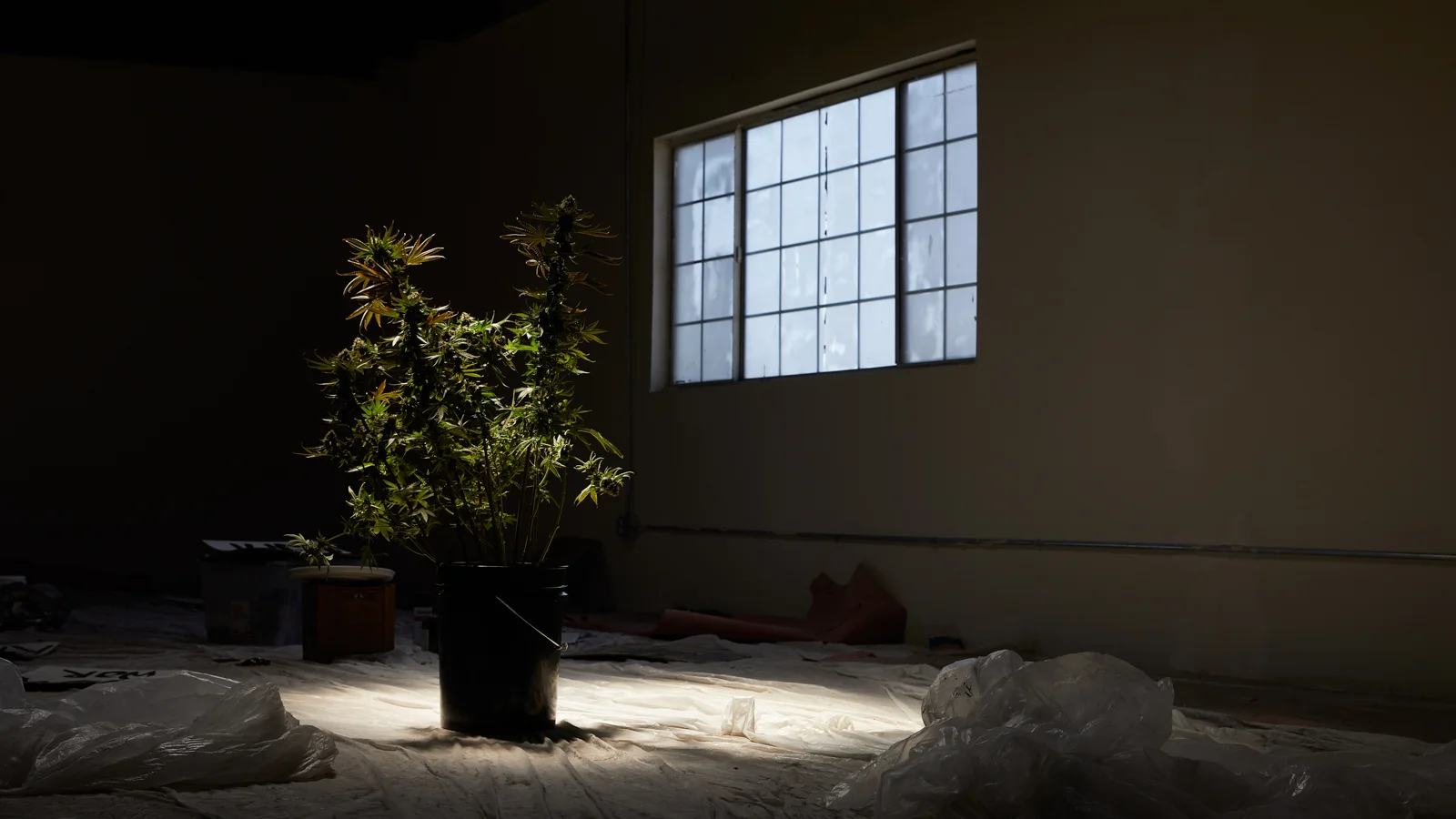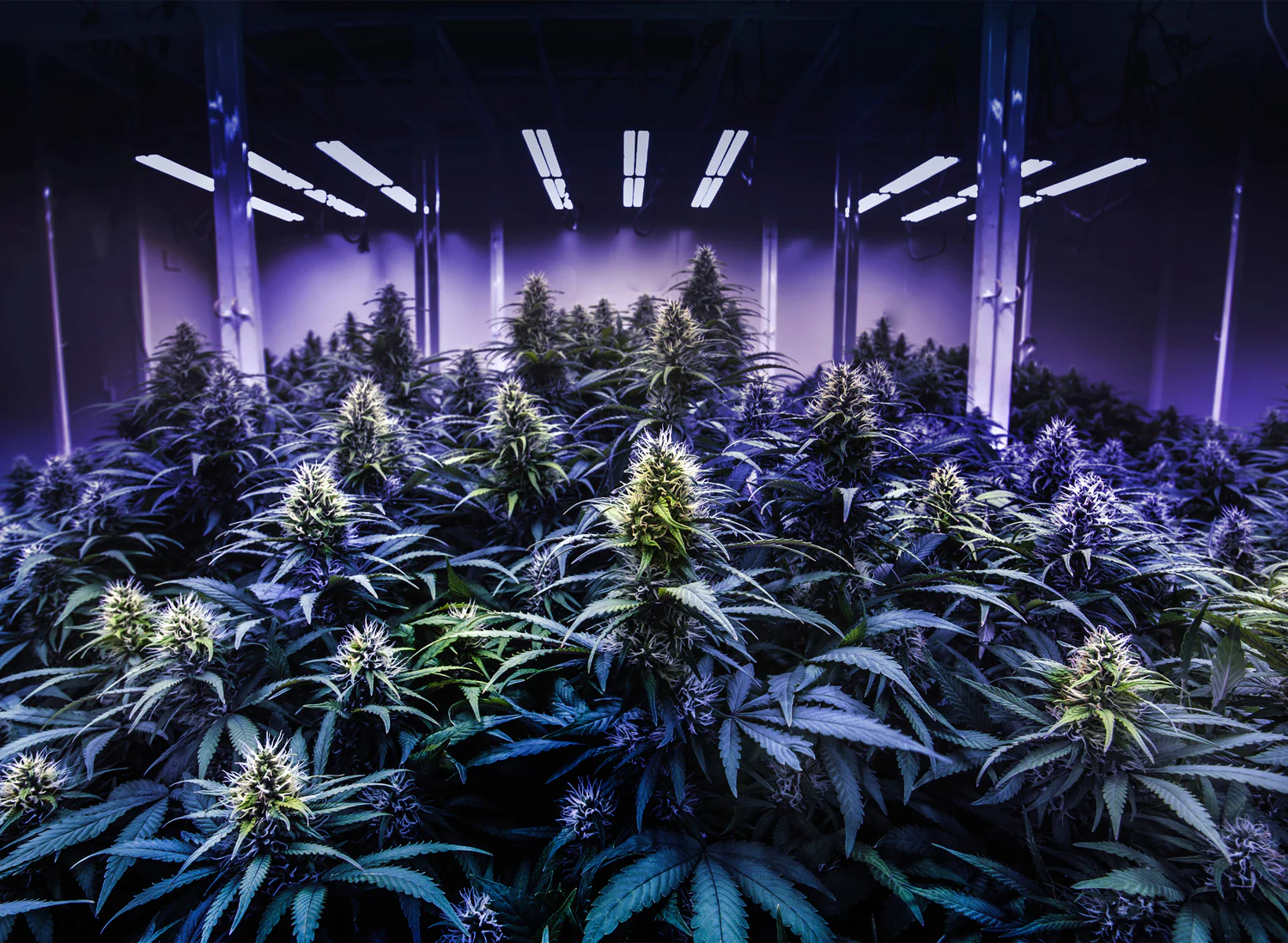
Since the legalization of cannabis in Canada, there’s been a remarkable surge in interest among enthusiasts eager to cultivate their own cannabis at home. This growing trend towards homegrown cannabis isn’t just about self-sufficiency; it’s also driven by a genuine fascination with the intricate art of cultivation. With a plethora of techniques available, indoor growing has emerged as a favoured method due to its adaptability and the ability to control environmental variables. Yet, at the heart of successful indoor cannabis cultivation lies lighting – a fundamental factor that profoundly influences plant growth and yield.
In this article, we venture into the realm of indoor cannabis cultivation, placing a special focus on the pivotal role played by lighting. While specialized grow lights are often heralded as indispensable for achieving optimal results, we embark on an exploration to ascertain whether it’s possible to grow weed indoors without relying solely on such specialized equipment. Our aim is to provide insights into the possibilities and constraints of indoor cannabis cultivation methods, while also shedding light on alternative approaches for aspiring home growers.
Join us as we delve into the intricacies of indoor cannabis cultivation, exploring the crucial role of lighting and uncovering innovative strategies for cultivating weed at home. Whether you’re a seasoned cultivator or a novice enthusiast, this journey promises to illuminate the path towards successful indoor cannabis cultivation.
To truly grasp the nuances of cannabis cultivation, it’s essential to start with a comprehensive overview of the basics. Cultivating cannabis involves a series of steps, from selecting the right seeds or clones to providing the optimal growing environment and nurturing the plants through each stage of growth. Whether grown indoors or outdoors, cannabis plants require careful attention to various environmental factors to thrive.
Indoor and outdoor cultivation present distinct approaches and challenges. Outdoor cultivation relies on natural sunlight, which can vary in intensity and duration depending on the location and season. In contrast, indoor cultivation offers greater control over environmental variables, including light, humidity, and temperature. This control allows growers to create an ideal environment tailored to the specific needs of their cannabis plants, regardless of external conditions.
Controlling environmental factors such as light, humidity, and temperature is paramount to successful cannabis cultivation. Light, in particular, plays a crucial role in the process of photosynthesis, wherein plants convert light energy into chemical energy to fuel growth. In indoor cultivation, where natural sunlight may be limited or inconsistent, artificial lighting systems are employed to provide a consistent light source throughout the plant’s lifecycle. These lighting systems not only ensure adequate light intensity but also allow growers to manipulate light spectra to optimize plant growth and development.
The significance of lighting in indoor cannabis cultivation cannot be overstated. It serves as the primary energy source for photosynthesis and directly influences plant growth, yield, and quality. By understanding and effectively managing lighting and other environmental factors, cultivators can maximize the potential of their cannabis plants, whether grown indoors or outdoors.
Lighting plays a pivotal role in every stage of cannabis growth, influencing various physiological processes crucial for plant development. Understanding how light affects cannabis growth is fundamental for cultivators aiming to achieve optimal yields and quality. During the vegetative phase, cannabis plants require ample light to encourage robust vegetative growth, including the development of healthy leaves and stems. High-intensity light, typically provided by metal halide (MH) or full-spectrum LED grow lights, is ideal for this phase, as it promotes vigorous growth and prevents stretching.
As the plants transition into the flowering phase, their lighting requirements shift to stimulate bud development and maximize resin production. During this stage, cultivators often switch to high-pressure sodium (HPS) or specialized LED grow lights with a higher proportion of red and orange wavelengths. These lights mimic the spectrum of natural sunlight during the late summer and early autumn, triggering the flowering response and promoting the formation of dense, resinous buds.

In addition to MH, HPS, and specialized LED grow lights, fluorescent lights are also commonly used in cannabis cultivation, especially in small-scale setups or for supplemental lighting. Fluorescent lights are energy-efficient and emit less heat, making them suitable for seedlings, clones, or maintaining vegetative growth in confined spaces. However, they may not provide sufficient light intensity for optimal flowering and bud production compared to MH or HPS lights.
Each type of grow light has its own set of pros and cons. LED grow lights are highly energy-efficient, produce less heat, and offer customizable spectra, allowing growers to tailor light conditions to suit specific growth stages. However, they tend to have a higher initial cost and may require additional cooling systems to manage heat output effectively. On the other hand, HPS lights are renowned for their high light intensity and proven track record in promoting robust flowering and bud development. Yet, they consume more energy and emit significant heat, necessitating proper ventilation and cooling measures to prevent heat stress and maintain an optimal growing environment.
The choice of grow lights in cannabis cultivation depends on various factors, including the growth stage, space constraints, energy efficiency, and budget considerations. By understanding the unique characteristics and applications of different types of grow lights, cultivators can make informed decisions to optimize light conditions and maximize the potential of their cannabis plants throughout the entire growth cycle.
The question of whether it’s possible to grow weed indoors without specialized grow lights is a common query among aspiring home growers. While specialized lighting systems are often considered essential for achieving optimal results, alternative lighting options do exist for those with constraints or seeking more cost-effective solutions. Natural sunlight stands out as the most readily available and efficient light source, especially for growers with access to a sunlit room or outdoor space. However, relying solely on natural sunlight indoors may pose challenges, particularly in regions with limited sunlight or during the winter months when daylight hours are shorter.
Household LED bulbs and compact fluorescent lamps (CFLs) present viable alternatives to specialized grow lights, offering cost savings and flexibility. LED bulbs, in particular, have gained popularity for their energy efficiency and customizable spectra, allowing growers to tailor light wavelengths to specific growth stages. CFL bulbs, while less efficient than LEDs, can still provide adequate light for vegetative growth or supplemental lighting. However, both LED and CFL bulbs may lack the intensity and spectrum range required for robust flowering and bud production, potentially leading to lower yields and inferior quality.

Despite the availability of alternative lighting options, using non-specialized lights for cannabis cultivation comes with its challenges and limitations. One of the primary challenges is ensuring consistent light intensity and spectrum throughout the entire growth cycle, as fluctuations or deficiencies in light quality can negatively impact plant health and yield. Additionally, non-specialized lights may not emit sufficient levels of specific wavelengths needed to stimulate optimal growth and flowering responses in cannabis plants.
To optimize natural or household lighting for cannabis growth, growers can employ various techniques to overcome these challenges. Positioning plants near windows or skylights to maximize exposure to natural sunlight, supplementing natural light with LED or CFL bulbs during periods of low light, and rotating plants to ensure even light distribution are all effective strategies. Additionally, using reflective surfaces such as Mylar or white-painted walls can help enhance light penetration and distribution within the growing space. By combining alternative lighting sources with proper cultivation practices, growers can still achieve satisfactory results without relying solely on specialized grow lights. However, it’s essential to manage expectations and recognize the inherent limitations of non-specialized lights in indoor cannabis cultivation.
Selecting the right type and wattage of specialized grow lights is crucial for indoor cannabis cultivation success. When choosing a grow light, consider factors such as the size of your growing space, the number of plants, and your budget. LED grow lights are popular for their energy efficiency and customizable spectra, allowing growers to tailor light wavelengths to specific growth stages. High-pressure sodium (HPS) lights are renowned for their high light intensity, making them ideal for the flowering phase. Metal halide (MH) lights are preferred for the vegetative phase due to their balanced spectrum. Pay attention to wattage recommendations based on the size of your growing area, ensuring adequate coverage and intensity for optimal plant growth and yield.
Proper lighting techniques vary depending on the stage of cannabis growth. During the vegetative phase, provide 18-24 hours of light per day to promote vigorous vegetative growth. Position lights at a distance of 18-24 inches above the canopy to prevent light burn and encourage healthy stem and leaf development. As plants transition into the flowering phase, reduce the light cycle to 12 hours of light and 12 hours of darkness to trigger bud development. Increase the intensity of HPS lights during this stage to promote robust flowering and resin production. Adjust light distance to maintain optimal light intensity and coverage as plants grow taller and canopy density increases.

Common mistakes when using specialized grow lights include improper light placement, inadequate ventilation, and over or under-watering. Avoid placing lights too close to plants, as this can cause light burn and heat stress. Ensure proper ventilation and air circulation to prevent heat buildup and humidity-related issues. Over-watering can lead to root rot, while under-watering can stunt growth and reduce yield. Maintain a consistent watering schedule and monitor soil moisture levels closely. Additionally, be mindful of nutrient deficiencies or imbalances that may arise due to improper light spectrum or intensity.
Optimizing lighting schedules and distances is essential for maximizing plant health and yield. During the vegetative phase, maintain consistent light cycles and distances to promote healthy growth and minimize stretching. As plants transition into the flowering phase, adjust light cycles and distances to encourage bud development and resin production. Monitor plant response to light changes and adjust as needed to achieve optimal results. Consider using timers to automate light cycles and ensure consistency. Regularly inspect plants for signs of stress or deficiencies and make necessary adjustments to lighting schedules and distances accordingly. By following these tips and techniques, growers can harness the full potential of specialized grow lights for successful indoor cannabis cultivation.
Nutrient management is a critical aspect of indoor cannabis cultivation, as proper nutrition is essential for healthy plant growth and optimal yields. Cannabis plants require a range of essential nutrients to thrive, including macronutrients such as nitrogen (N), phosphorus (P), and potassium (K), as well as micronutrients like calcium (Ca), magnesium (Mg), and iron (Fe). These nutrients play vital roles in various physiological processes, from photosynthesis and root development to flower formation and resin production.
One of the key considerations in nutrient management is the choice of nutrient delivery system, which can significantly impact plant growth and nutrient uptake. Traditional soil-based cultivation provides a natural buffer for nutrients and microbial activity, making it suitable for novice growers and those seeking a more hands-off approach. Hydroponic systems, on the other hand, offer precise control over nutrient delivery and uptake, allowing for faster growth rates and increased yields. Other alternative growing mediums, such as coco coir or peat-based mixes, offer a balance between soil and hydroponic systems, providing good drainage and nutrient retention.
Maintaining proper nutrient levels is essential for preventing nutrient deficiencies or excesses, which can lead to stunted growth, nutrient lockout, or other health issues in cannabis plants. Regular monitoring of pH levels and nutrient concentrations in the growing medium is crucial for ensuring optimal nutrient uptake and plant health. Additionally, adjusting nutrient formulations and concentrations based on the plant’s growth stage can help meet changing nutrient demands throughout the growth cycle. Incorporating organic supplements or microbial inoculants can also enhance nutrient availability and promote overall plant health in indoor cannabis cultivation.
By understanding the essential nutrients required for cannabis growth, selecting the appropriate nutrient delivery system, and implementing proper nutrient management practices, indoor growers can optimize plant nutrition and achieve healthy, high-yielding cannabis crops. Regular monitoring, adjustment, and experimentation are key to maintaining a balanced nutrient regimen and maximizing the potential of indoor cannabis cultivation.
Training and pruning are essential techniques in indoor cannabis cultivation for optimizing yield, canopy management, and overall plant health. Training methods such as topping, low-stress training (LST), and defoliation aim to manipulate the plant’s growth patterns and promote the development of multiple colas, resulting in increased bud production and more even canopy distribution. Topping involves removing the apical meristem or main stem tip to encourage lateral growth and the formation of additional colas.
Low-stress training techniques, such as bending or tying down branches, help to create a more uniform canopy by promoting lateral branching and maximizing light exposure to lower bud sites. These training methods are particularly effective for increasing yields in limited vertical grow spaces and maximizing light utilization throughout the canopy.
In addition to training techniques, pruning plays a crucial role in enhancing airflow, light penetration, and bud development in indoor cannabis cultivation. Pruning involves selectively removing unwanted or excess foliage, such as fan leaves and small lower branches, to improve air circulation, reduce humidity, and minimize the risk of mold and pest infestations. By opening up the canopy and allowing light to penetrate deeper into the plant, pruning encourages the development of larger, denser buds and promotes more consistent bud ripening. Strategic pruning also helps to redirect the plant’s energy towards top bud sites, resulting in higher-quality flowers and increased cannabinoid production.
The timing and frequency of training and pruning techniques may vary depending on the specific characteristics of the cannabis cultivar, growth stage, and desired plant structure. Generally, training and pruning should be initiated during the vegetative phase when plants are actively growing and can recover more quickly from stress. Topping can be performed once the plant has developed multiple nodes, typically around the third or fourth node, while LST and defoliation can be implemented gradually as the plant continues to grow and stretch.
Regular maintenance pruning throughout the vegetative and early flowering stages helps to manage canopy density and promote optimal light distribution. However, it’s important to avoid excessive pruning or stress during the flowering phase, as this can impact bud development and overall yield. By incorporating training and pruning techniques into their cultivation practices and adjusting them based on individual plant characteristics, indoor growers can achieve healthier plants, maximize yields, and produce top-quality cannabis flowers.
In conclusion, this article has provided a comprehensive overview of indoor cannabis cultivation, with a specific focus on the crucial role of lighting. We’ve explored the basics of cannabis cultivation, discussing the differences between indoor and outdoor growing and highlighting the significance of controlling environmental factors such as light, humidity, and temperature. The role of lighting in cannabis growth was extensively examined, including its impact on different growth stages and the various types of grow lights available, such as LED, HPS, and fluorescent lights.
Throughout the discussion, we addressed the common question of whether it’s feasible to grow weed indoors without specialized grow lights, exploring alternative options such as natural sunlight and household LED or CFL bulbs. While these alternatives offer flexibility and cost savings, we also acknowledged their limitations in providing adequate light intensity and spectrum for optimal cannabis growth.
Nevertheless, we emphasized the benefits of using specialized grow lights, including their ability to provide consistent light intensity and spectrum tailored to specific growth stages. Specialized grow lights, such as LED and HPS lights, offer energy efficiency, customizable spectra, and proven results in promoting robust vegetative growth and flowering.
In closing, we encourage readers to experiment and find the best lighting setup that suits their needs and resources. Whether utilizing specialized grow lights or alternative lighting options, the key is to maintain consistency, monitor plant response, and adjust lighting schedules and distances as needed. By harnessing the power of light, growers can unlock the full potential of indoor cannabis cultivation, yielding healthy plants and high-quality buds.
Order weed online in Winnipeg. Puff Wow makes it easy to buy Cannabis online with our secure checkout and fast delivery.
Winnipeg, Manitoba
Canada

